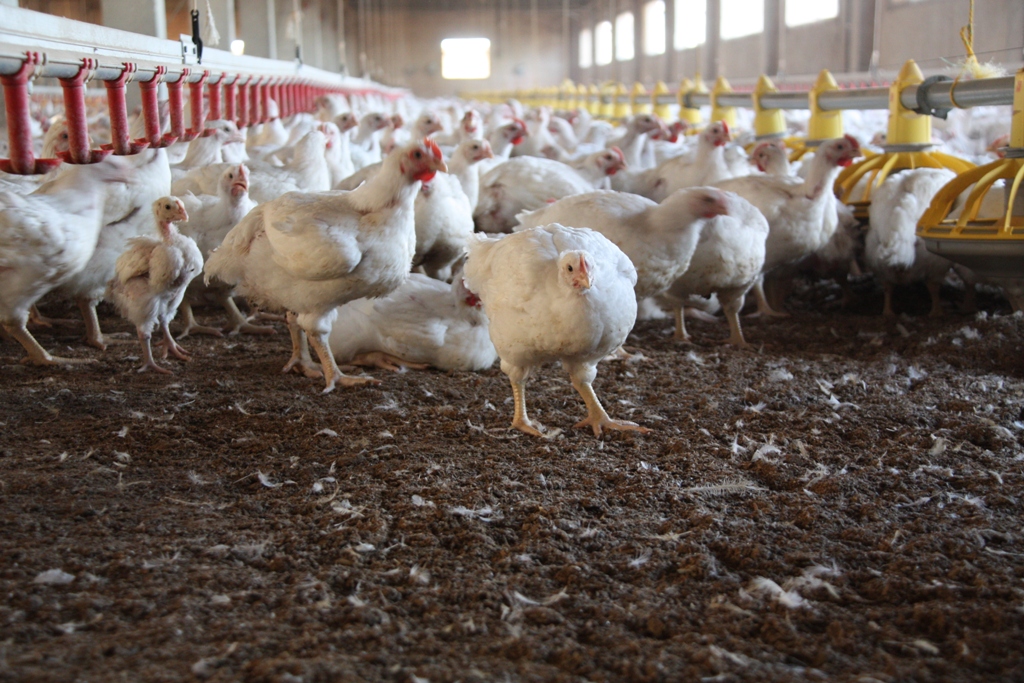 In Part 1, I told you about my work with the 1918 influenza virus, and promised to tell you more about why the Highly Pathogenic Avian Influenza H5N2 (HPAIH5) influenza strain that is currently rampaging through chicken farms in the Midwest is unlikely to jump to humans.
In Part 1, I told you about my work with the 1918 influenza virus, and promised to tell you more about why the Highly Pathogenic Avian Influenza H5N2 (HPAIH5) influenza strain that is currently rampaging through chicken farms in the Midwest is unlikely to jump to humans.
I ended Part 1 by pointing out that virus-host interactions are highly specific, and suggested that random mutations are unlikely to improve the virus’s fitness. The key word in that sentence is “unlikely”—of course, sometimes, viral mutations do occur that improve fitness. Indeed, one of the ways viruses have survived and thrived over billions of years is by tolerating a high mutation rate; generating thousands of variants during each infection incre ases the chances that one of those variants will evade the next defense strategy that might arise in the host. Bear in mind, however, that the mutation rate strategy has a Goldilocks quality to it: too low, and the host will likely evolve a defense against the unchanging virus; too high, and too many of the viral progeny will be defective. It’s a trade-off. And because mutations occur throughout the genome, gains in characteristic A will almost certainly be offset by mutations that degrade characteristics B,C or D.
ases the chances that one of those variants will evade the next defense strategy that might arise in the host. Bear in mind, however, that the mutation rate strategy has a Goldilocks quality to it: too low, and the host will likely evolve a defense against the unchanging virus; too high, and too many of the viral progeny will be defective. It’s a trade-off. And because mutations occur throughout the genome, gains in characteristic A will almost certainly be offset by mutations that degrade characteristics B,C or D.
Now I’ll admit that the influenza virus gets around more than most and I’m not arguing for complacence. The influenza Type A family includes members that infect humans, pigs, horses, domestic fowl, and wild birds—even, occasionally, dogs and some marine mammals. A few strains can infect more than one of these hosts (for example, strains that are human adapted can usually infect pigs, and vice versa, and some wild bird strains can infect domestic poultry). And at least once, in 1918, it looks like an influenza virus jumped nearly directly from wild birds into humans and proved to be highly transmissible and unusually virulent (nota bene: this jump occurred without the virus first adapting to chickens or other domestic poultry hosts). I’d be the last person to say that this could never happen again. But just because it happened once does not mean that every chicken influenza outbreak is prelude to another 1918-scale pandemic. Why not, especially if the virus is so darn flexible?
 Let’s think about the challenge here. In birds, influenza does not infect the respiratory tract, it infects the lower intestines—let’s call it the “chicken gut” for short. You will be reassured to know that the inside of your nose is not very much like the gut of a chicken. For one thing, it’s several degrees cooler in temperature in your nose. The pH is different too.
Let’s think about the challenge here. In birds, influenza does not infect the respiratory tract, it infects the lower intestines—let’s call it the “chicken gut” for short. You will be reassured to know that the inside of your nose is not very much like the gut of a chicken. For one thing, it’s several degrees cooler in temperature in your nose. The pH is different too.
Still, why couldn’t a variant arise in the chicken gut that could infect the human upper respiratory tract? Well, at the very least, the protein that it uses to latch onto the host cell would have to mutate so that it became capable of docking with the receptor on a human nasal cell, which is different from the receptor it uses in the bird gut. But let’s say that happens. From a cell deep in a chicken gut buds a new virus with the ability to bind to the human nose cell receptor. But where is that virus? Still in the gut! Now—because its receptor protein has mutated—it can’t bind well, if at all, to the cells around it, infect them, and replicate. It can’t amplify. (Viruses undergo rounds of replication during an infection—infecting one cell and making thousands of new viruses, which then bud off and infect neighboring cells—that’s called amplification, and it needs to happen if the virus is going to spread from host to host). So now you need to postulate that a single “baby” virus with a particular set of changes is going to somehow find its way from the chicken gut to someone’s nose where it can establish an infection. That’s just really, really unlikely to happen.
Now before anyone else brings it up, it is true that several hundred people have been infected with chicken flu (in this case, a HPAI of the subtype H5N1) over the past twenty years. Doesn’t that mean the virus has adapted to humans? Well, no. It looks like those people who have been infected by chicken flu have caught it by inhaling high doses of the virus deep into their lungs where the conditions are more similar to the chicken gut (warmer and moister, for example) and, critically, where there are cells with receptors similar to those used by the virus in the chicken gut. And while I would be the first to admit that taking up residence in human lungs gets the virus a lot closer to a human nose, you still have the problem of a progeny virus  with affinity for the receptor found in the nose budding off into an environment containing only the receptors found deep in the lung. It’s a dead end with no possibility of amplification. Can I offer a 100% guarantee? No. I’m not saying that one single baby virus—should it have all the right mutations, and none that crippled its other functions—couldn’t be breathed up into the nose and establish an infection. I’m just saying the probability is vanishingly low. Which is probably why it hasn’t happened in the last 20 years, on thousands of chicken farms with millions of chickens dying of H5N1.
with affinity for the receptor found in the nose budding off into an environment containing only the receptors found deep in the lung. It’s a dead end with no possibility of amplification. Can I offer a 100% guarantee? No. I’m not saying that one single baby virus—should it have all the right mutations, and none that crippled its other functions—couldn’t be breathed up into the nose and establish an infection. I’m just saying the probability is vanishingly low. Which is probably why it hasn’t happened in the last 20 years, on thousands of chicken farms with millions of chickens dying of H5N1.
Viruses are formidable, but they’re not omnipotent, malevolent, or infinitely malleable. They are subject to the same evolutionary constraints as any other biological entity, notably, they cannot “try” to become more virulent, or gain a set of mutations because they “need” them in order to switch hosts. Such changes must happen within the environment in which the virus finds itself, and the changes must be advantageous—or at least neutral—in that particular environment. So the next time you read about a virus that’s just about to make the deadly jump into humans, be wary of the “viral omnipotence” misconception.
"The Three Bears - Project Gutenberg eText 17034". Licensed under Public Domain via Wikimedia Commons
Human nose - "Nez d'homme" by Jeremie63 - Own work. Licensed under CC BY-SA 3.0 via Wikimedia Commons

